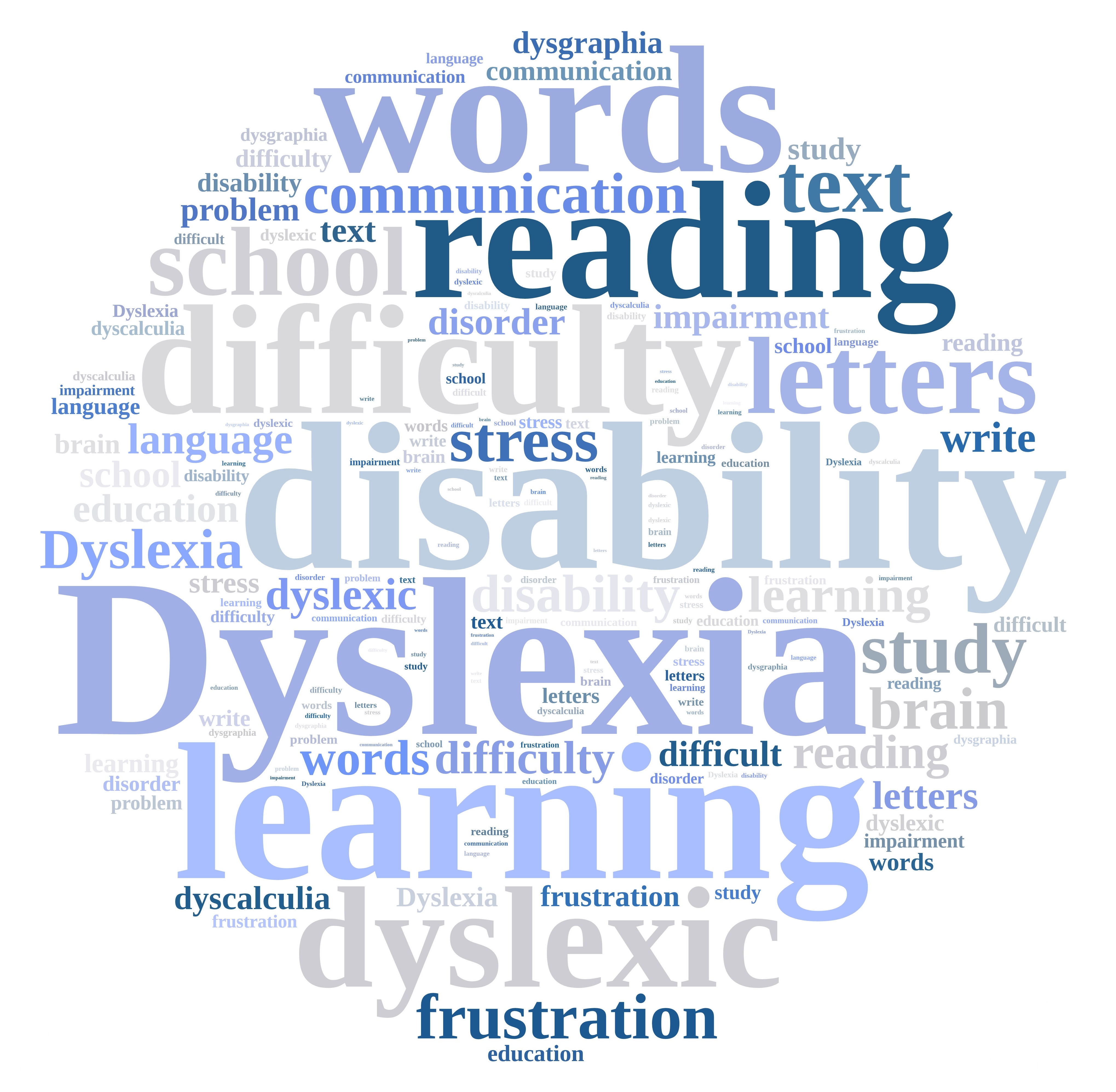Dyslexia Awareness Month and Opening All Options
Part 3. For Academics and Teachers
Written by Trevor Allan
This is the third article in a series of four that celebrates Dyslexia Awareness Month in October and the 20th Anniversary of the publication of Opening All Options, a resource for students with Specific Learning Disabilities (SpLDs). The first article looked at the background and history of Opening All Options and the second examined the section for Disability Practitioners in the current version. This resource has been revised several times and this article looks at the section for Academics and Teachers in the current version.
It is very important for Academics and Teachers to understand the nature and impact of SpLDs, since frequently, they are the ones who have to implement adjustments, examine teaching, learning and assessment practices and take into account the effects of a SpLD on a student so that they can meet their legal obligation to minimise disadvantage experienced by students with this legally recognised disability.
As with the Disability Practitioner section, the nature and types of Specific Learning Disabilities are explained in the section headed “What is a Specific Learning Disability (SpLD)?” It looks at some key facts about SpLDs, and some of the potential impacts, then outlines the main types of SpLD – Dyslexia, Dyscalculia and Dysgraphia and follows up with an outline of some SpLD terminology.
It is very important to remember that SpLDs, like most disabilities, have a very individualised and personal impact on each person. While there are many common impacts, the extent, type, severity and nature of the impact will vary from individual to individual, as will the strategies required to address those impacts. Plus each person will bring their own experiences, skills, techniques and management practices to their studies. Also the nature of the courses studied, the teaching, learning and assessment strategies employed will also affect the adjustments and strategies needed to address the effects of the SpLD.
One significant benefit from designing courses, teaching and assessment for students with SpLDs is that the requisite flexibility and variety of teaching and assessment strategies to cater for students with SpLDs is usually of benefit to most other students, catering for different learning styles and strengths to ensure all students have their best opportunity to achieve their potential. Moving to more Inclusive Practice usually benefits everyone.
Opening All Options provides valuable information for Academics and Teachers by including a section on Universal Design Solutions which explains the concept of Universal Design for Learning (UDL) and outlines the three main principles of UDL:
Multiple formats of learning content
· Multiple means of expression
· Multiple modes of engagement.
This section also includes some Tips for Universal Design for Learning (UDL) to engage students with an SpLD as well as links to further information and Resources. UDL has become an important strategy in teaching and accessibility around the world, but particularly in America. It is gaining greater acceptance and application in Australia and the research supports the benefits of adopting UDL principles and practices.
Another very helpful section is Teaching Strategies, which provides some Key Facts about SpLDs, including the legislative context, then provides a number of Tips for inclusive teaching strategies that engage students with SpLDs. Again, this provides academics and teachers with ideas on how to accommodate the needs of students with SpLDs. Not all of these tips would apply to all students with SpLDs, and individual consultation or recommended Reasonable Adjustments from the Disability Practitioner would need to be implemented for each individual, but the list of tips provides some very worthwhile ideas to consider.
The section on Study Skills, while probably of most benefit to students with SpLDs, is also important for Academics and Teachers, since they may be able to suggest particular strategies if a student is having difficulties in particular areas, or at very least they would benefit from understanding what strategies may be employed by different students.
One very worthwhile recommendation in this section is to refer students with SpLDs to the Institution’s Academic or Study Skills Unit to encourage the development of effective strategies for each individual student.
This section then outlines a number of potential tips and strategies for:
- Reading
- Writing
- Comprehension
- Organisation
Followed by some suggested further resources.
The Final section for Academics and Teachers is on The Impact of an SpLD in Education which outlines some of the effects that not recognising and adjusting for SpLDs can have on individuals. These effects can be profound, with otherwise intelligent people feeling like failures, having low self-esteem and disengaging from education. I have personally seen on many occasions the transformational impact of an SpLD diagnosis and the implementation of adjustments and strategies informed by that diagnosis on the lives and confidence of the students. It is usually profound and substantial, and is absolute justification of the existence of SpLDs and the importance of ensuring that the impact is accommodated in Education.
Once again, please take the opportunity afforded by Dyslexia Awareness Month to delve into the fantastic resource that is Opening All Options. Perhaps it would be a good idea to use Dyslexia Awareness Month to forward the link to this article or the relevant section of OAO to academics and teachers to encourage them to find out more about the best strategies for teaching students with SpLD. The more academics and teachers who are aware of these issues and better informed about SpLD, the better it will be for everyone, especially the students.
My next article will be the final in this series of four articles and will look at the Assistive Technology section of Opening All Options.
Part 1. Background and history of Opening All Options.
Part 2 For Disability Practitioners
October 2019


